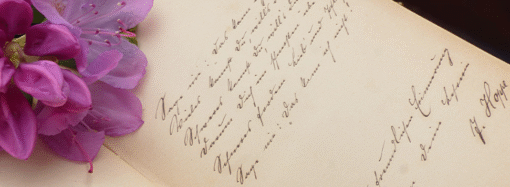For my birthday this year, one of my sons gave me an unexpected gift. The brown box, rectangular and less than 2 inches wide, contained another slightly smaller box, black and classy, which in turn contained a complete and original copy of the Thursday, March 1, 1951, New York Times, the newspaper from the day I was born.
The paper smelled of mildew—though an airing out quickly solved that—and its edges were crumbly and brittle so that whenever and wherever it’s opened the paper leaves behind a sprinkling of golden-brown flakes. Some of the headlines, which spoke to the events of the day, made me chuckle, such as “US Forces Launch 2 Attacks on Reds,” referring to the communists we were fighting in Korea with slang we would never use today.
Two front-page stories, too, had to do with organized crime figures Lucky Luciano and Frank Costello, which brought to mind the Godfather movies. Another article reported that Republicans had killed any tax hikes by the city, an impossibility nowadays given that Republicans on the New York City Council are outnumbered by over 7-to-1.
Inside the paper was further evidence of the canyon separating us from that not-so-distant past. Liquor and tobacco come-ons are strewn throughout the Times. The fashion models, both men and women, are glamorous, a word rarely spoken nowadays, and several pages are crammed with small print advertisements, hundreds of them, announcing job openings, apartment rentals, and other sundries. Though a weekday edition, this paper devoted an entire page to books and writers, from a large ad for the James Jones bestseller From Here to Eternity to a touching review of His Eye Is on the Sparrow, an autobiography by singer and actress Ethel Waters.
And unlike today, the opinion pieces and letters to the editor appealed to reason rather than emotion. One editorial, for instance, which argued for enforcement of parking ordinances to reduce congestion on New York City’s streets, read more like a news article than some fiery demand that the police ticket double-parked vehicles.
At the top of the front page, we find that former banner of the Times: “All the News That’s Fit to Print.” Above that tagline is “100th Anniversary,” as 1951 was the centennial year for the paper.
Three items in particular might draw the interest of today’s readers. The first is an editorial “For Peace and Freedom,” which examined the question of dispatching more American troops to Europe. While supporting that move, the writer pointed out that Europe needs “to do its ‘fair share’ for its own defense.” More than 70 years later, American politicians are still calling for members of NATO to contribute their fair share to the defense budget.
In that same editorial, the writer brought China briefly into the picture: “By abandoning China, long since admitted to be a grave mistake, we invited the Korean war.” The consequences of that long-ago loss of China to communism, which the Times calls a “fateful error,” haunt us still.
Then there are the advertisements for a new-fangled machine, the television. One of these ads offers “Exciting, brilliant pictures on huge 19″ TV tube. Beautiful 18th century cabinet to grace your living room. Built-in antenna. 475.00.” A Regency 17-inch console sells for $415 while a Sedgwick 19-inch console includes AM and FM radio plus “2 record-changers” and goes for $825. That was quite a chunk of money in a year when the average family income was $3,700.
More significantly, however, we see in those early televisions the beginning of a long, slow shift in news reporting. Over the next 40 years, television became the main competitor for papers like the Times, able to report breaking news much more quickly than any print outfit. Today, of course, television media are in fierce competition with the internet, and many newspapers have either folded or seen a diminished readership. For better or for worse, news out of places from California to D.C. to Ukraine to Gaza reaches our computers just as quickly as it arrives at The New York Times.
For those diminishing numbers of folks who remember and miss the days of print journalism, this edition of the Times offered a bit of unintended irony. Though the custom had already faded away in most print outlets, newspapers used to include some poems for readers. Stuck down in the righthand corner of the opinion page is one of these, perhaps inserted simply as a filler. Here in its entirety is “Renunciation,” by Ina Duley Ogdon, known then as a writer of hymns:
An old house nestles by the country way,
Sheltered by cherished trees of bygone day,
And, from a car, that loiters, yet, too fast,
A wistful figure gazes, going past, going past!
—
Image credit: Unsplash
1 comment















1 Comment
Francis Bagbey
March 21, 2024, 6:08 pmThis from your story “US Forces Launch 2 Attacks on Reds,” referring to the communists we were fighting in Korea with slang we would never use today" reminded me that The WSJ would not let me use ChiComs in my comment to an opinion piece in that paper. The reason…my shorthand way of not spelling out Chinese Communists is regarded as a slur! Good grief! Wouldn't want to offend.
Thanks for all your well written insights in Intellectual Takeout!
REPLY